Travel guide: An off-the-beaten-track safari in Kenya
Lions and tigers and er, giraffes, oh my! Here’s how to see the best safari of your life minus the crowds…
Forget travelling to the tourist-heavy Maasai Mara – for an unparalleled experience in the Kenyan wilderness, head to the hills of Laikipia and the stunning Loisaba Conservancy.
TO DO
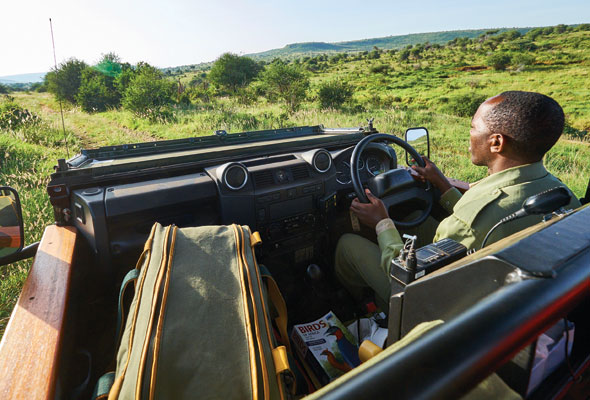
Game on
Game drives are the best (and safest) way to get close to wild animals in their natural habitat. At the Loisaba Conservancy all the guides are local Kenyans who are trained members of the Kenyan Professional Safari Guides Association. Our guide Joel had been a game driver for nearly 20 years, which explains how, over the course of our daily drives, we saw everything from elephant families meandering through the hills to lions relaxing at dusk before setting off on their evening hunt.
Learn from the locals
Kenya is home to some fascinating tribes, whose way of life dates back centuries. The Loisaba Conservancy makes a conscious effort to support the local community by offering visitors a chance to spend an afternoon visiting the traditional Samburu village nearby. The Samburu are a farming tribe that live a semi-nomadic existence, distinct from Kenya’s well-known Maasai tribe, and you’ll get to see their way of life up close.
Hop in the saddle
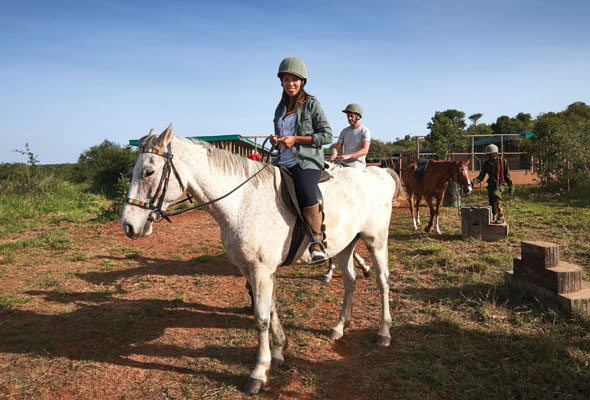
If you’re comfortable on a saddle, horse-riding on safari is a once-in-a-lifetime experience. Without the growls of a Land Rover engine on a game drive, it’s a uniquely peaceful way to explore the wilderness. You’re very likely to spot some wildlife, which is why it’s recommended for competent riders. However, brave beginners are welcome to give it a go too.
Follow the dog trackers
As part of their anti-poaching efforts, the conservancy employs a dog team comprising experienced handlers and their two sniffer dogs. The team carry out regular demonstrations to show visitors how they protect the grounds. It’s a family-friendly activity – children will get a kick out of meeting the sniffer dogs, Warrior and Machine.
WHAT TO EAT
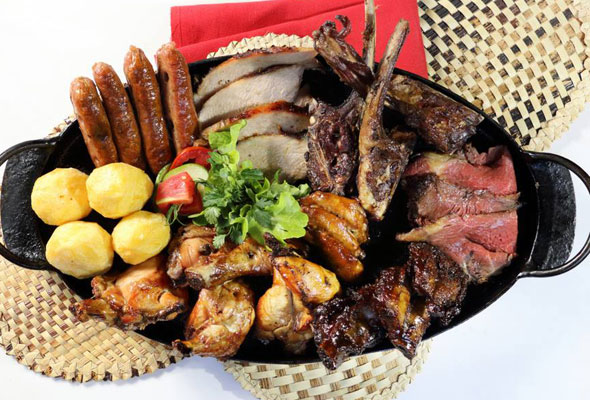
Ugali
Probably the most well known Kenyan food, ugali is a staple of the local diet. This thick cornmeal paste is used like rice and as a base for stews and curries. It’s stodgy and heavy on the carbs, but immensely satisfying – not to mention a meal enjoyed by many of Kenya’s elite marathon runners.
Nyama choma
Kenyan cuisine is undeniably meat heavy. For an unforgettable taste of nyama choma (roasted meat), head to The Carnivore near Nairobi’s international airport, where a huge variety of meat is served churrascaria style, sliced tableside: from beef, goat and lamb to crocodile and ostrich.
Kachumbari
There’s something distinctly Mexican-influenced about the salsa-like kachumbari, which is a combination of diced tomatoes, onions, chilli and coriander. It’s used as a side salad or garnish for stews and meat, and perfectly showcases just how fresh and tasty the local produce is.
WHERE TO STAY
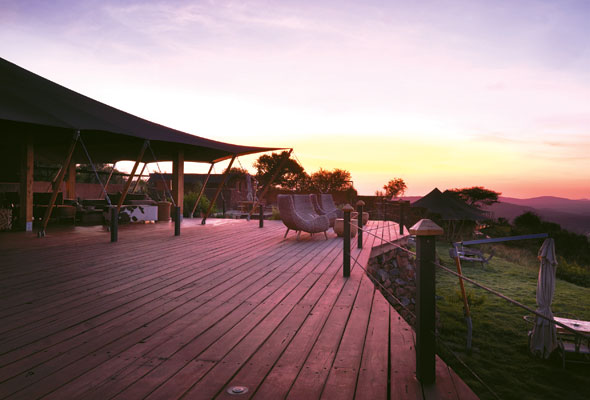
LUXURY
Loisaba Tented Camp
This incredible resort takes glamping to a whole new level, with its stylish furnishings and stunning infinity pool. The tents are luxurious enough to feel like hotel rooms, but you can zip open the walls to admire the plains and valleys below you. The service is wonderfully attentive, the restaurant serves up expertly cooked local produce, and we loved the eco-friendly touches, from the lack of plastic water bottles to the solar power panels.
From Dhs2,300 during the high season for full board with twice-daily game drives. loisaba.com
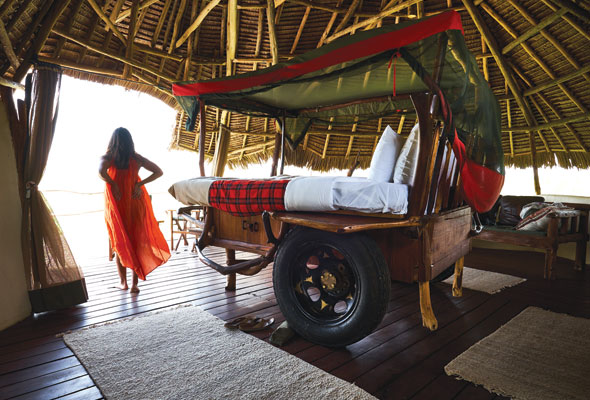
LAIDBACK
Kiboko Star Beds
You’ll be happy to give up a few home comforts for the incredible Kiboko Star Beds. The rooms are open-air, largely constructed from reclaimed local stone and wood. The highlight is the starbeds – wooden, four-poster beds that are wheeled out onto your terrace overlooking the local watering hole (home to a family of hippos), so you can spend a night sleeping under the stars.
From Dhs1,100 during the high season for full board with twice-daily game drives. loisaba.com
THREE MORE SAFARIS TO TRY
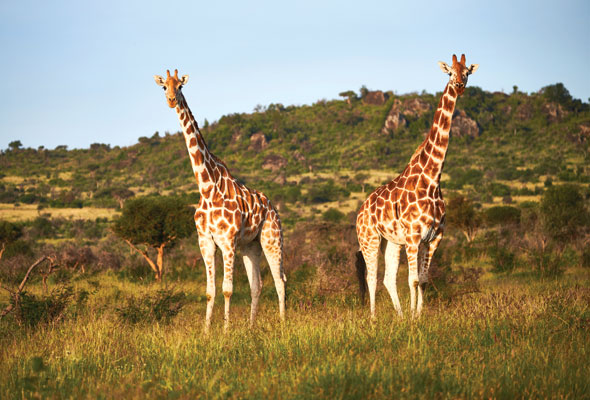
Kenya is blessed with countless safari experiences to try – it all depends on what you’re interested in.
Take a photographic safari
For budding photographers who want to capture unforgettable images, a photographic safari is a must-try. For the best in the field, check out CNP Safaris. Each of their vehicles accommodates just three photographers and features custom-built chairs that swivel 360 degrees to help you get the perfect shot. Plus, their cars are kitted out with a bank of plug points so you can recharge on the go, and they even rent out state-of-the-art cameras if you don’t have your own.
Experience Kenya’s best elephant sightings
Amboseli National Park is known as ‘the land of the giants’, based on its population of over 1,000 elephants, some of the biggest in the world. Game drives here are an incredible experience, not only because of these gentle giants, but because the close proximity to Tanzania makes for wonderful views of Mt Kilimanjaro. For where to stay, check out Tortilis Camp Amboseli.
Go on safari with Richard Branson (sort of)
Virgin CEO Richard Branson has put his considerable name behind a number of luxury safari camps, including the stunning Mahali Mzuri, which sits within the Olare Motorogi Conservancy. It’s perfectly situated to give you access to the annual Great Migration, a migration of wildebeest that’s been listed as one of the seven wonders of the new world.
GETTING THERE

Emirates flies directly from Dubai to Nairobi Jomo Kenyatta twice a day, with flights costing around Dhs2,000 return. Then you’ll need to take a domestic flight from Nairobi’s Wilson Airport to Loisaba, for Dhs1,500 (approx) return.
Getting around
Your hotel will organise the transfer from Loisaba’s airstrip to your accommodation. It’s best to explore the area on an organised game drive – most take place early morning or late afternoon to evening. Be sure to wrap up warm.
When to go
The best time to visit Loisaba is from June to December. After the rainy season of April and May, the grounds of the conservancy are green and lush.
– For more about Dubai straight to your newsfeed, follow us on Facebook.
Photos: Peter Maloney
